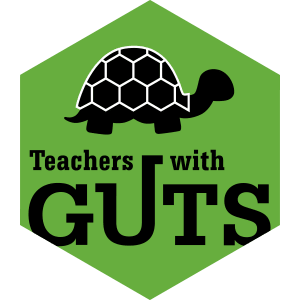This post was originally published at https://jessesbyers.github.io./ on October 15, 2019, when I was a Software Engineering student at Flatiron School.
Recently I've been asked by a number of friends and family members:
"Why code?"
For me, the answer really comes down to kids. As a middle school science teacher, I was always focused on helping my students develop skills around science and engineering practices, including modeling, the design process and experimental design, and computational thinking. I started realizing that at some schools, students are introduced to simple programming and robotics starting as early as Kindergarten...but at my school, since we had virtually no technology program, we were providing almost zero opportunities in this area. I took it upon myself to introduce coding in the context of middle school science class. But first I had to learn a few things before I could teach it.
I started off using code.org resources to introduce my students how to create their own apps using App Lab, and then give students the opportunity to present science projects through an app as opposed to more traditional formats such as slideshows, posters, or essays. Many students loved learning to create apps, but I felt torn because I had spent so much time teaching a skill for students to present their science, when they needed to spend more time actually doing the science.
The following year, I discovered the Project GUTS curriculum, which is a curriculum designed to teach programming skills in the context of a science classroom.
Project GUTS — Growing Up Thinking Scientifically — is an integrated science and computer science program for middle school students serving schools and districts internationally. Growing up thinking scientifically means learning to look at the world and to ask questions, developing and using computer models that help answer questions through scientific inquiry, and using critical thinking to assess which ideas are reasonable and which are not. To grow up thinking scientifically means knowing science to be a computing-rich, dynamic, creative endeavor, a way of thinking, rather than a body of facts.
Through a series of modules, students learn basic block coding skills using the StarLogo Nova platform, and apply them towards creating scientific models and simulations. Students need to decide what variables they want to manipulate, program those variables, and then run tests using their models to collect data and discover new things about the content. I had 8th graders creating disease transmission models for MRSA, and collecting data around how various factors affected the spread of the disease and survival rates. Every group took a different approach, and the results were inspiring.
Throughout that journey, I had to teach myself basic coding skills so that I could teach the curriculum and stay just a step ahead of the kids through learning new concepts and debugging projects. However, I was hooked. I had not felt so creative or challenged for a long time, and these were two feelings that had been missing in my current work. I also saw the direct impact of my kids being challenged to be creative in new and unfamiliar ways, which had a very positive impact on their science learning.
Fast forward a year, and I have decided to pursue a new career in Software Engineering, and have enrolled as a part-time student in Flatiron School's Software Engineering Course. I want to challenge myself and be creative everyday, and with the first month under my belt, I can say that I am meeting that first goal. After the course, I would either like to work on an engineering team developing science educational software and/or curriculum, or perhaps move into a technology teaching role. Stay tuned as I blog about the challenges I encounter on the journey, my solutions, and my projects.








Top comments (0)